* = landmarks!
Flora and Fauna since last time:
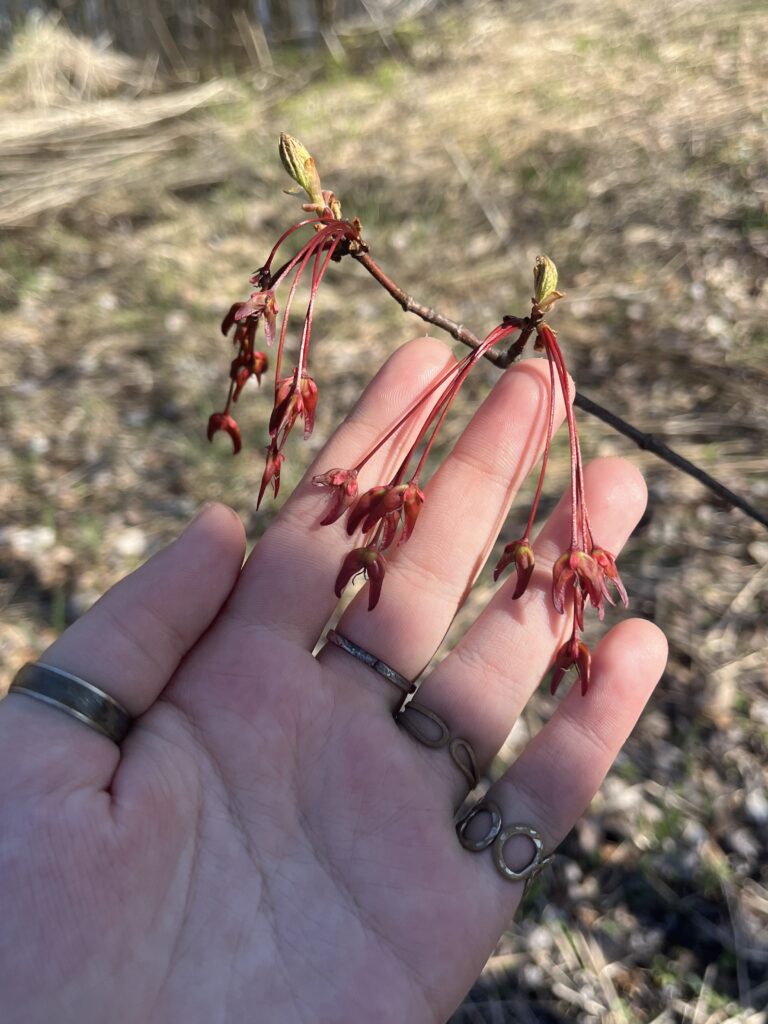
I picked a great day for my last phenology site- though it was cloudy in the morning, the sky cleared to a solid blue by 3, when I went. I had expected to find a spring green, blossoming site, judging by the tiny bright leaves and flowers that had broken out in the trees downtown and along my walk to my site. It wasn’t quite as springy as I imagine, none of the tall trees at the site wearing any more than buds except the tall Basswood*: most of the greenery was in the form of low-to-the-ground plants and the younger trees. I identified a few species I hadn’t noted back in the fall, before I knew any ID, by their fresh leaves: honeysuckle, Japanese barberry, a young boxelder, a little plum tree by the red and sugar maples; three were some vines and a couple ground cover plants I couldn’t identify.
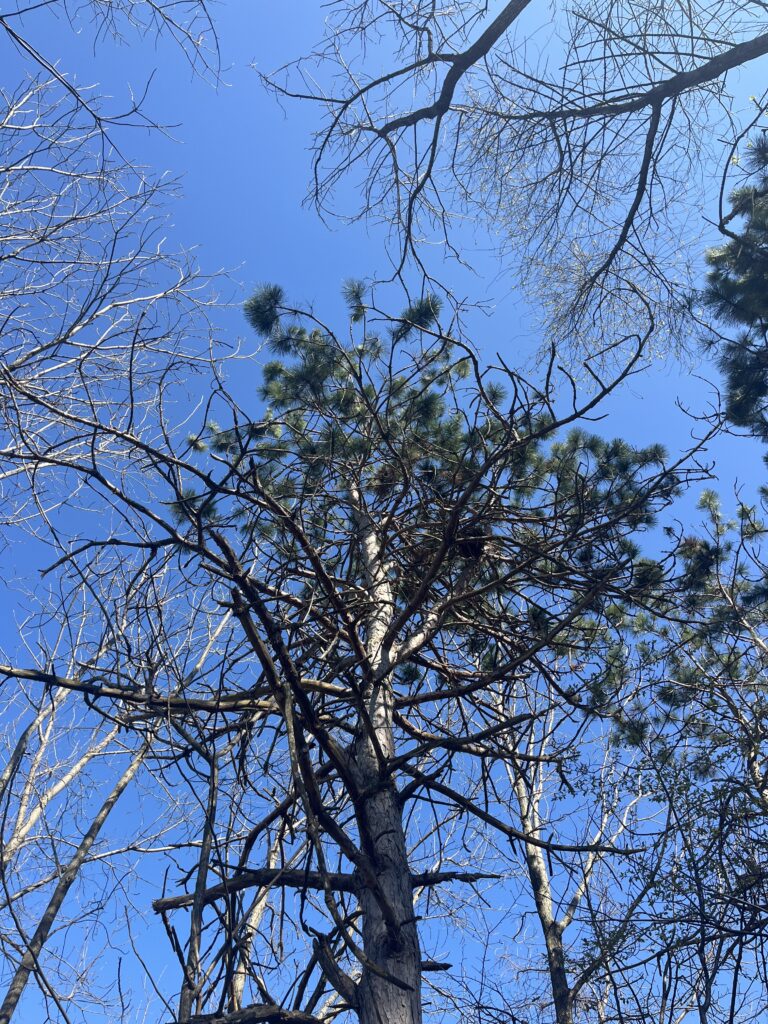
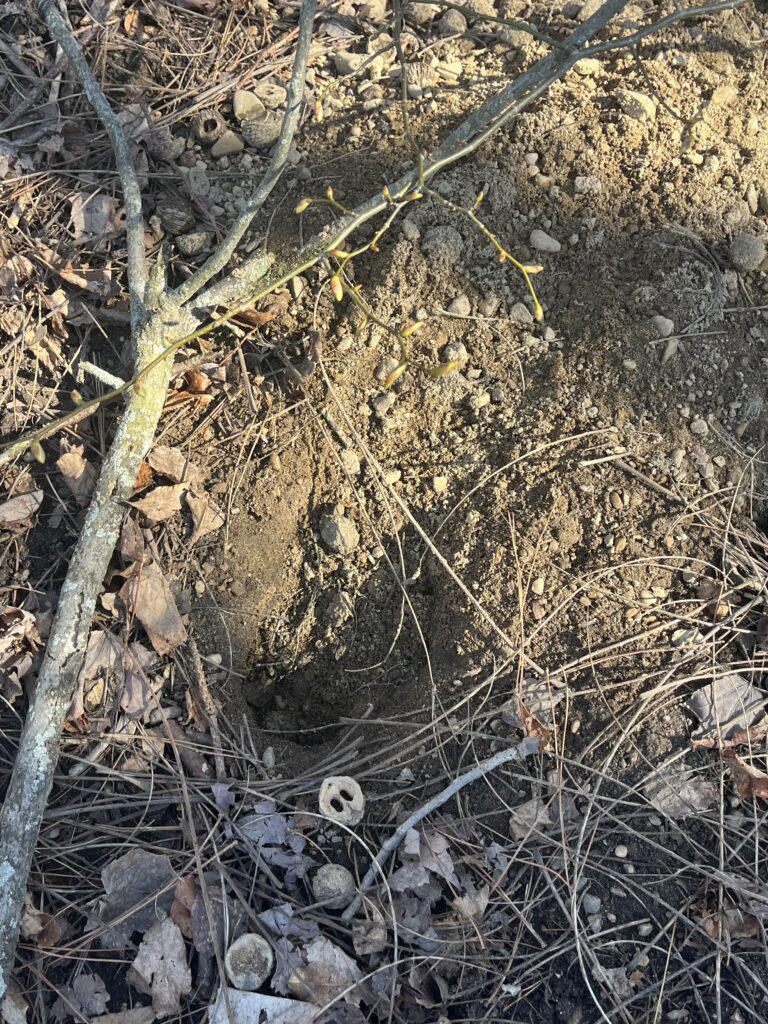
The new burrow* I spotted last time has a new exit (entrance?). Since our trip for the Bioblitz, I downloaded Merlin, and I hoped to track some of the elusive birds on site- I knew they were around by their nests, but never got a good look. There’s some kind of construction going on in the facility nearby, so there was rarely a silence long enough to get a good read, but Merlin did make out a Red-winged Blackbird chirp from the nests in the Eastern Pine* and an American Goldfinch somewhere in the area too, though I couldn’t spot a nest.
The changes over the past year have been minimal, besides the expected phenological ones. The snags and fallen log* by the pines might be a little more decomposed, and the stand of young basswoods* a little taller. There’s things going on all around, the golf course in and out of use on the right and the UVM facility on the left undergoing construction, but this little natural corridor remains reliable.
Ecological status:
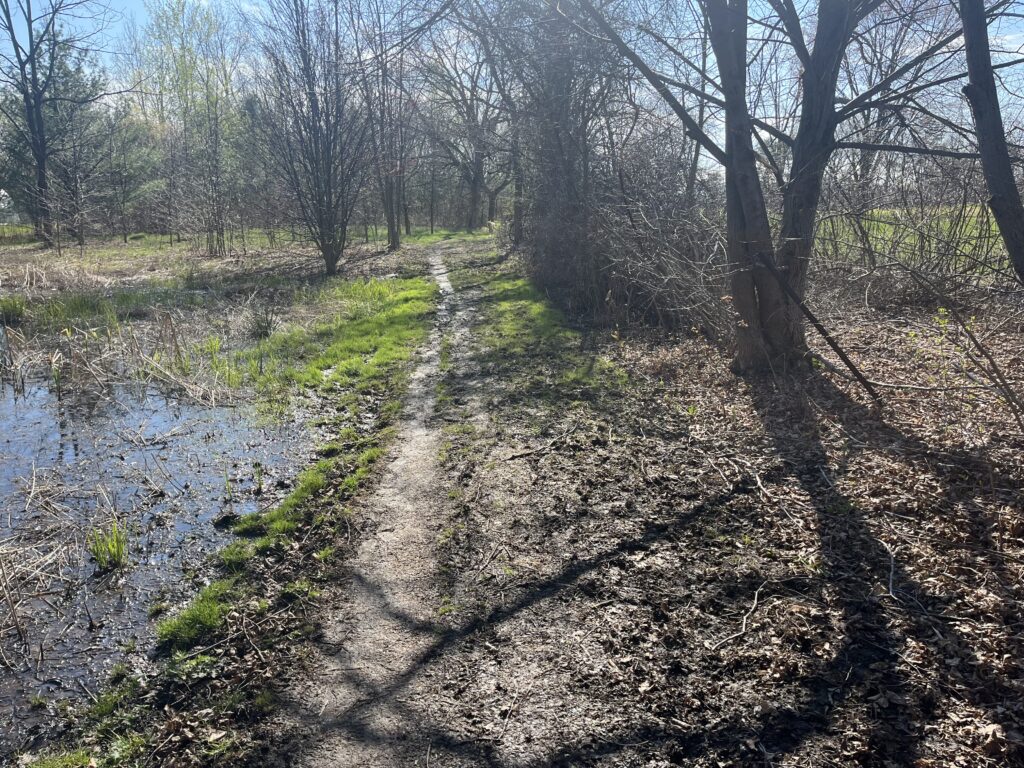
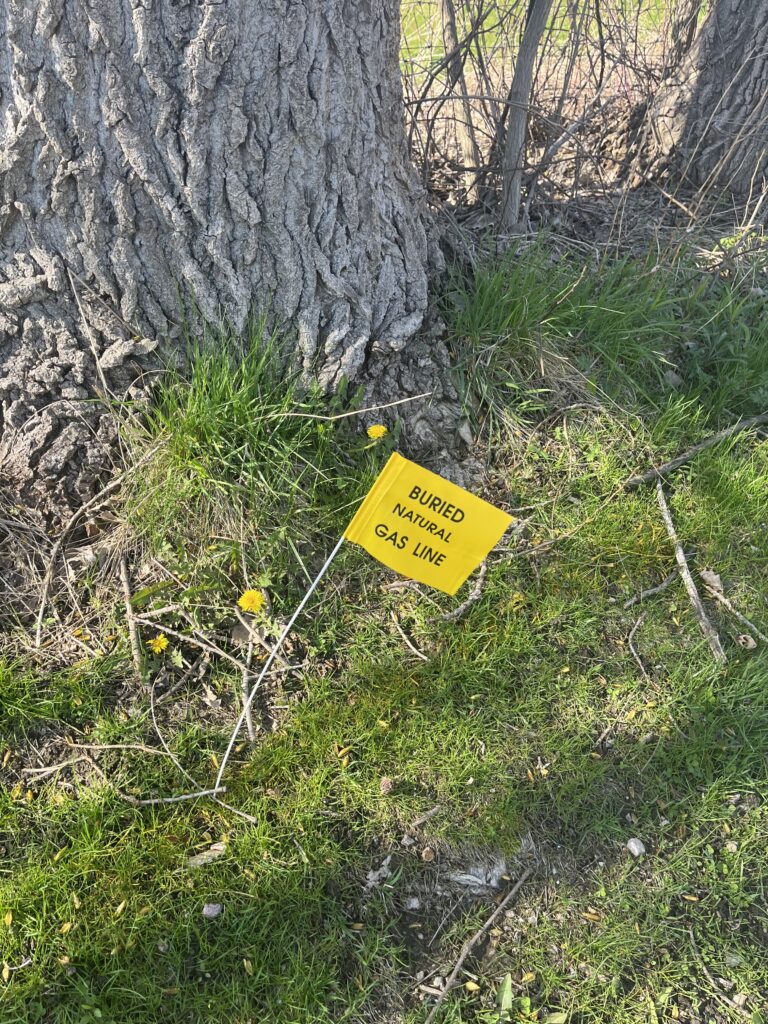
Very satisfyingly, an ongoing site mystery has been solved: the oil blotches I saw every single visit in the marshy area are because there’s a buried natural gas line running under the area! These little yellow flags that said so line the road up to the trail, and I almost didn’t notice them on my way out- I swear, I either missed them completely in the past or they had just put them out. That makes sense as to why it always seems to be there, despite the trail being used only by pedestrians with their dogs or the occasional bike. It is pretty alarming though, that oil is visibly seeping out and into the marsh, and I wonder how it might affect the nearby plants and animals that may drink from there. Another thing I’d noticed after doing our McKenzie Park restoration assignment were how that access road must be the reason the trail entrance is always so muddy- the water from that little marsh system doesn’t drain all the way through to the grassy area on the other side of the road.
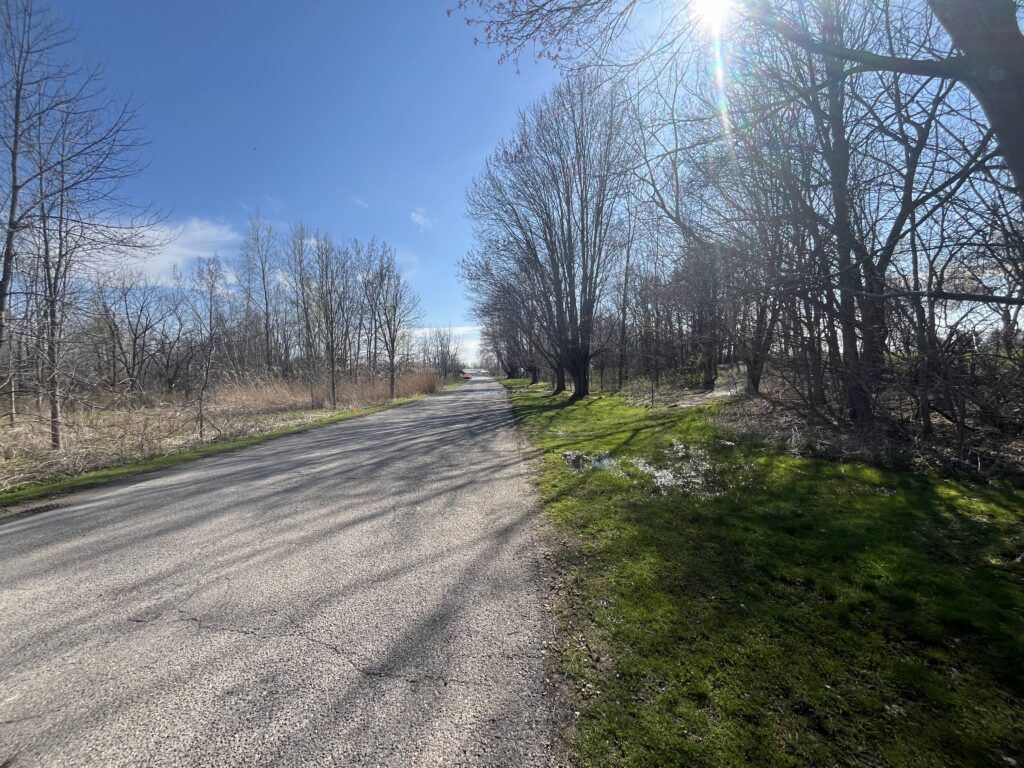
My place and I:
This site has it’s problems, but after spending the entire school year visiting it, I’ve grown to care about it and I know I’ll be coming back just to check out how things might change in the future. It’s been nice to have a place to go and really take the time to observe, and somewhere I could practice the skills I’ve been learning throughout the year- it feels as familiar as my backyard at home now- or even moreso, since I haven’t ID’d every species at home and seen them change through the year. I may be hours away at school, but I’ve gotten to know a handful of spots well that I can go to and feel welcomed and comfortable, and this place is one of them. Even if everyone passing through isn’t standing on the path observing and recording species and phenological changes, I know it’s appreciated: almost each time I would come their would be people walking their dogs, or old women chatting as they stroll through in this safe alley between the golf course and academic building towards a residential area. Animal’s aren’t the only ones who value a wildlife corridor, we as people use them all the time, and I’m grateful for this one.